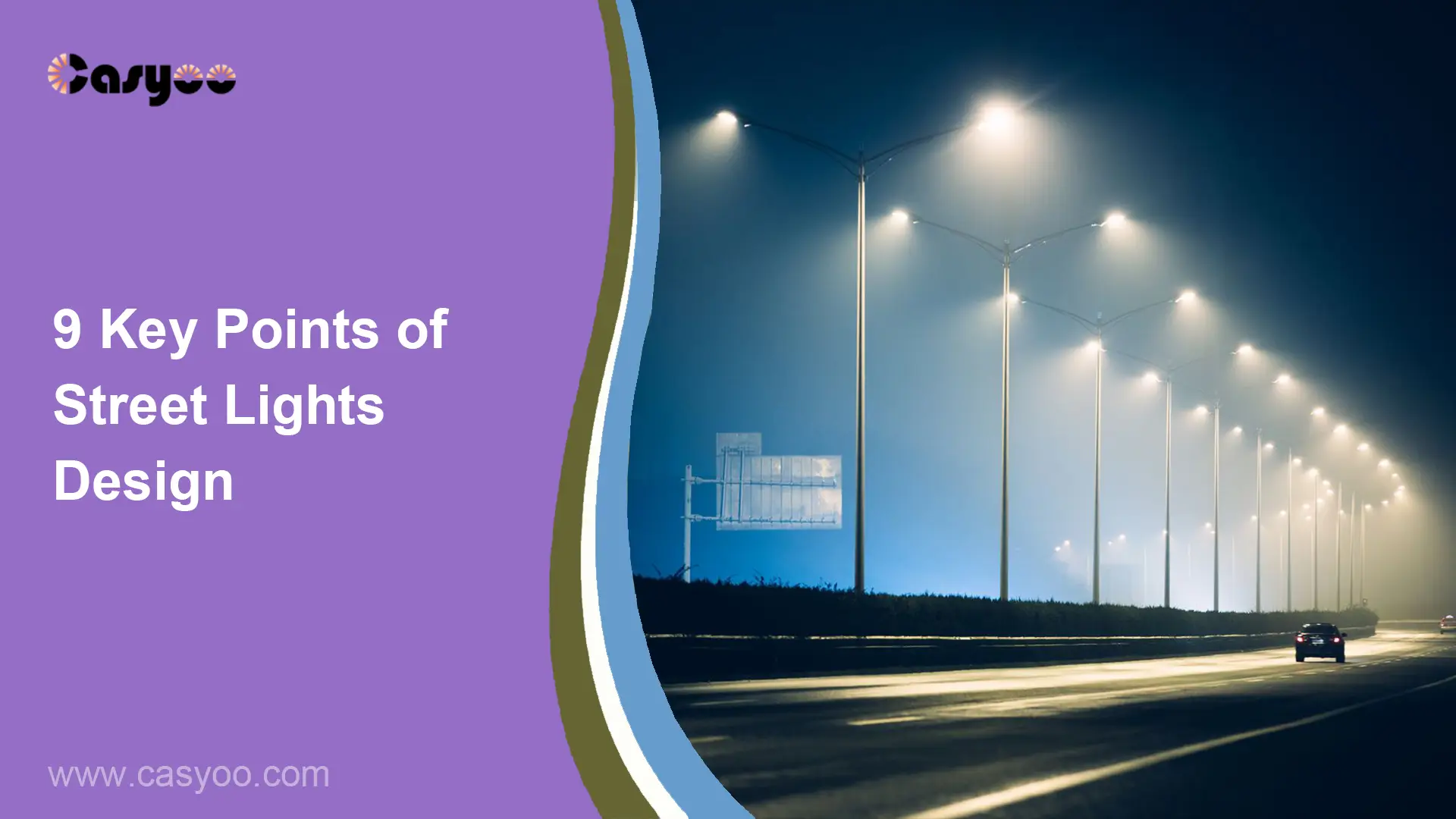For street light design, there are some guidelines that you must follow. If you don’t know the basics, it is hard to figure out the right type of street light. Also, for those who plan to set up street lights for a project, this passage is helpful as it covers 9 points that most buyers concern about street lights, such as standards, height and spacing, etc. You shouldn’t miss it!
1. Purposes of street lighting
- To analyze important parameters like the luminance, light distribution, and placement to make sure the lighting is bright and suitable
- To avoid negative effects of street lights on drivers and passengers, such as glare
- To create the best lighting for ensuring the safety of the citizens
- To save as much energy as possible to cut the costs of street lighting
2. Classifications of different roads
Before introducing the IES standards of street light design, we need to first get to know how they define major types of roads.
- Freeway: A divided highway with complete control over access
- Freeway A: A freeway with high traffic and visual complexity. These freeways are usually near major metropolitan areas.
- Freeway B: Other roadways with complete control over access
- Expressway: A divided highway whose access is partially controlled
- Major: This type of road is often called “arterials” and is the main network of traffic flow. They connect the crucial countryside roads with the cities. Besides, they can also lead to abutting property. Here is where most traffic is generated.
- Collector: The roads that connect major and local roads. Through these roads, vehicles like trucks or buses come in and out of residential, commercial, and industrial areas. They are not for long trips.
- Local: These roads directly lead to residential, commercial, and industrial areas. They are a large part of the traffic network, but the traffic here is not as much as on the above two types of roads.
The pavements are classified by the specularity of the road surface, as shown in the following table. This is also CIE’s way of classifying the roads. In this table, Qo is the overall lightness of the pavement. By evaluating the S1 ratio (the specularity of the pavement) and Qo to predict visibility level and pavement luminance.
| Class | Qo | Description | Mode of reflectance |
| R1 | 0.10 | Road surface made of Portland cement concrete. Asphalt road surface with at least 12% artificial bríghtener (e.g. Synopal) or aggregates (e.g. labradorite, quartzite). | Mostly diffuse |
| R2 | 0.07 | Asphalt road surface with at least 60% gravel aggregate (larger than 1cm). Asphalt road surface using an aggregate mix that contains 10–15% artificial brightener. |
Diffuse and specular |
| R3 | 0.07 | Asphalt road surface (both standard and carpet seal) with dark particles (e.g., trap rock, blast furnace slag); rough texture after a few months of use (common for highways). | Slightly specular |
| R4 | 0.08 | Asphalt road surface with extremely smooth texture | Mostly specular |
3. Standards of street light design
According to the standards of IES, they mainly measure the street light design by luminance, uniformity of luminance, and glare, as shown in the above two tables.
| Road classification | AVG. LUMINANCE Lavg (cd/m2) | AVG. UNIFORMITY RATIO Lavg/Lmin | MAX. UNIFORMITY RATIO Lmax/Lmin | MAX. VEILING LUMINANCE RATIO LVmax/Lavg |
| Freeway A | 0.6 | 3.5 | 6.0 | 0.3 |
| Freeway B | 0.4 | 3.5 | 6.0 | 0.3 |
| Expressway | 1.0 | 3.0 | 5.0 | 0.3 |
Lavg: the minimum average brightness of the pavement
Lmin: minimal brightness of the pavement
LVmax: maximum veiling luminance
| Street classification | Pedestrian activity level | AVG. LUMINANCE Lavg (cd/m2) | AVG. UNIFORMITY RATIO Lavg/Lmin | MAX. UNIFORMITY RATIO Lmax/Lmin | MAX. VEILING LUMINANCE RATIO LVmax/Lavg |
| MAJOR | HIGH | 1.2 | 3.0 | 5.0 | 0.3 |
| MEDIUM | 0.9 | 3.0 | 5.0 | 0.3 | |
| LOW | 0.6 | 3.5 | 6.0 | 0.3 | |
| COLLECTOR | HIGH | 0.8 | 3.0 | 5.0 | 0.4 |
| MEDIUM | 0.6 | 3.5 | 6.0 | 0.4 | |
| LOW | 0.4 | 4.0 | 8.0 | 0.4 | |
| LOCAL | HIGH | 0.6 | 6.0 | 10.0 | 0.4 |
| MEDIUM | 0.5 | 6.0 | 10.0 | 0.4 | |
| LOW | 0.3 | 6.0 | 10.0 | 0.4 |
Low: 10 or fewer pedestrians/hour
Medium: 1 to 100 pedestrians/hour
High: over 100 pedestrians/hour
4. Choice of the light source
Nowadays, most countries promote the use of LED lights in street lighting for the following reasons:
- Lifespan: Theoretically, the lifespan of LED lights can be as long as 100,000 hours. But in real use, it is vital to evaluate the service life of LED light components, such as the lens. Besides, LED lights will also be influenced by light decay, like most traditional lights. Nonetheless, LED lights have a maximum lifespan of around 50000 hours, well exceeding the 20000 hours of HPS lights.
- CRI: The CRI of LED lights is about 80-90, while that of HPS lights is 20-30. This means that LED lights can present what the surrounding areas are like in detail, showing the real color of the lit objects.
- Dimming: For LED lights, it is easier to dim the light accurately. The light output of LED lights is proportional to the current, so by changing the current, the light intensity of LED lights can be changed. Besides, since frequent switching will not cause much damage to LED lights, they can also be controlled by PWM signals.
- Efficiency: While HPS lights are working, part of the energy is wasted and converted to heat. Moreover, the reflector will reflect and absorb a large part of the light it emits. For LED lights, their recent efficiency can reach more than 100 lumen/W, as they change most electricity into light.
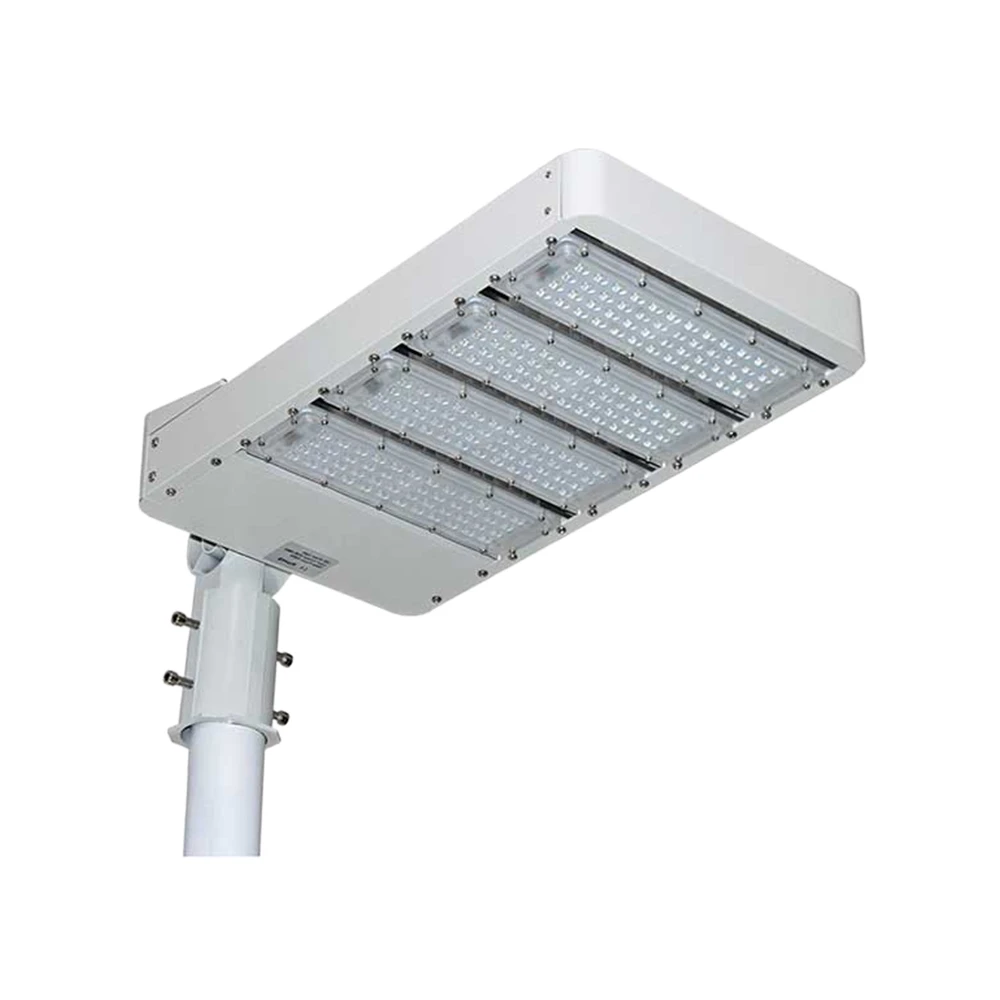
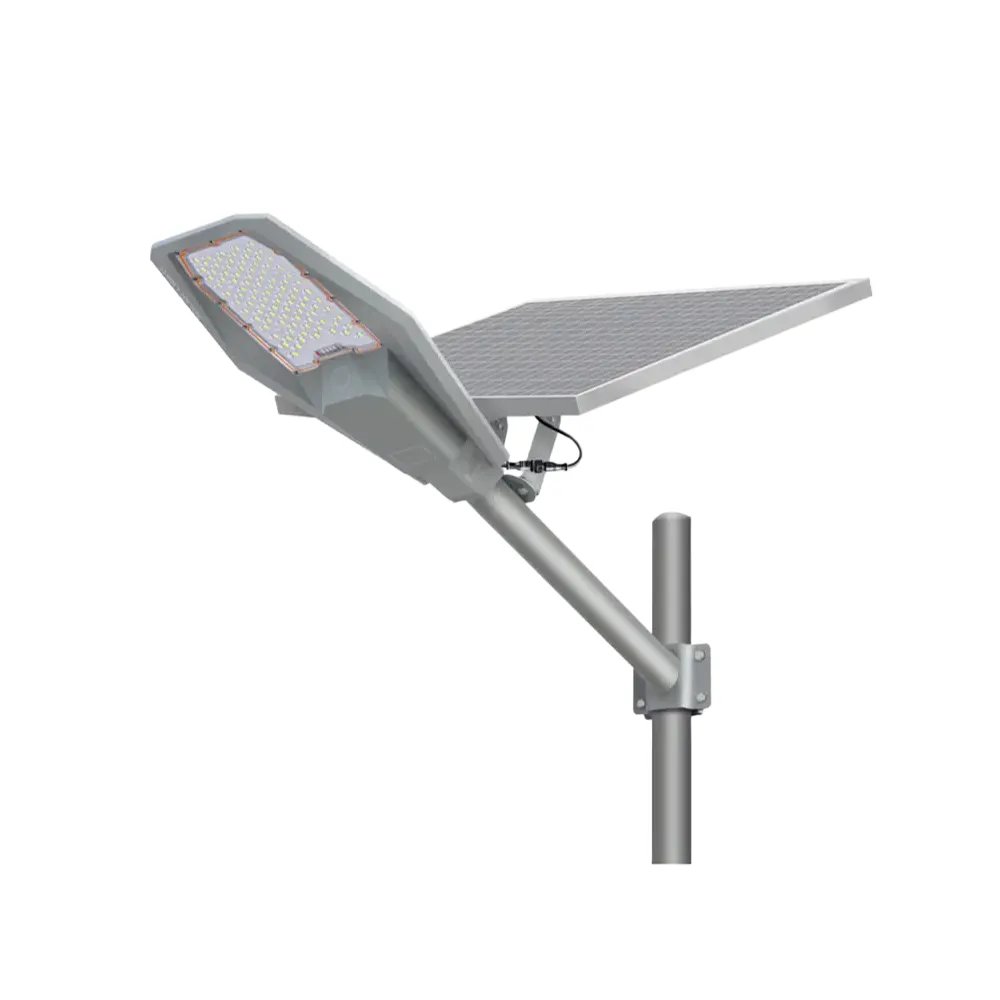
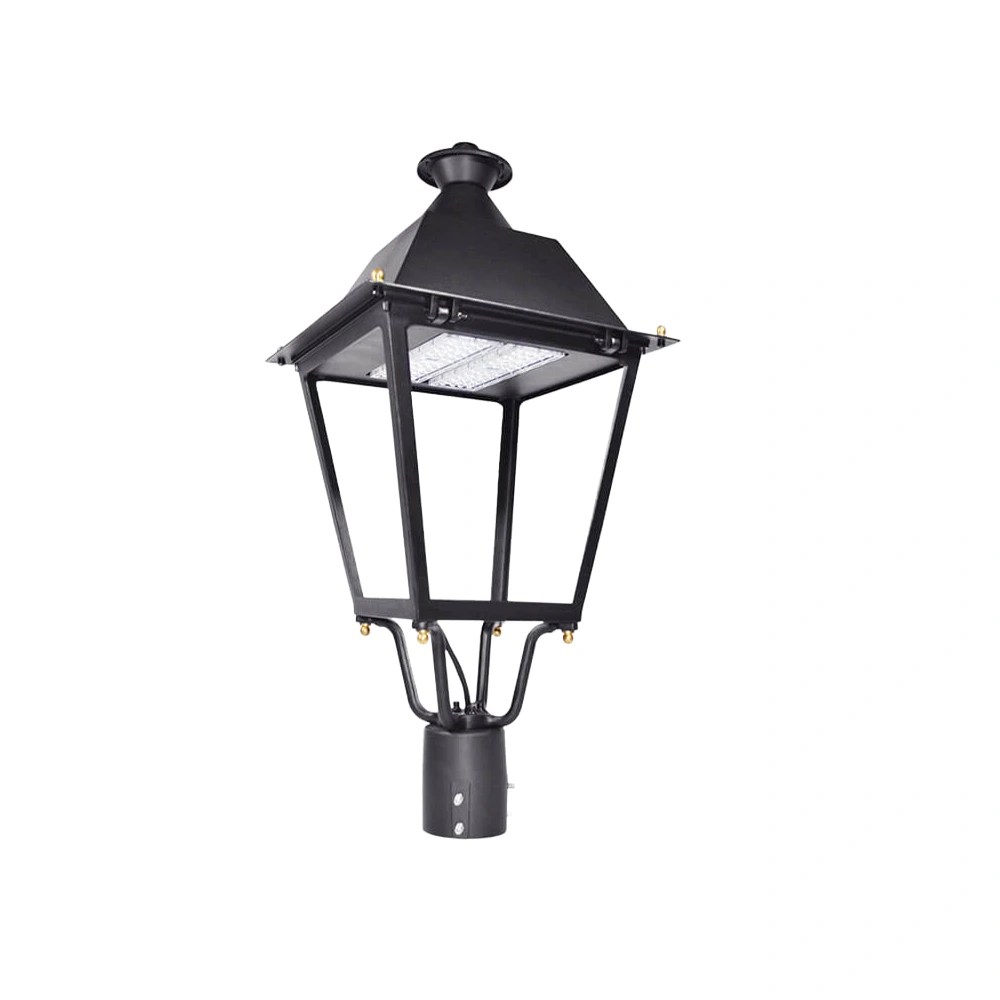
5. Light distribution of street lights
There are many ways to classify the light distribution types of street lights, and one of them includes three types: cutoff, semi-cutoff, and non-cutoff. These three types provide different light intensities in different directions. From cut-off to non-cutoff street lights, the beam angle turns larger.
- Cut-off street lights: The maximum light intensity direction is between 0° and 65°, and the maximum allowable light intensity in the directions of 90° and 80° is 10 cd/1000 lm and 30 cd/1000 lm, respectively.
- Semi-Cutoff street lights: The maximum light intensity direction is between 0° and 75°, and the maximum allowable light intensity in the directions of 90° and 80° is 50 cd/1000 lm and 100 cd/1000 lm, respectively.
- Non-cutoff street lights: The maximum allowable light intensity in the 90° direction is 1000 cd.
6. Placement of street lights
Normally, there are five ways of placing the street lights:
- Single-sided: The street lights are often arranged on one side on relatively narrow roads. This way of arrangement requires that the height of the street lights be greater than the width of the roads. Single-sided placement can save money but will make the luminance of one side lower than the other side.
- Staggered: The street lights are arranged in a zigzag pattern on both sides of relatively wide roads. The height of the lights should be no less than 0.7 times the width of the roads. Staggered placement can fulfill the requirements of overall luminance uniformity but has low uniformity in the vertical direction. It provides better lighting on rainy days than a single-sided arrangement.
- Opposite: Street lights are arranged oppositely on both sides of the roads. This bilaterally symmetrical placement is suitable for wide roads. The lights’ height should be more than half the road’s effective width.
- Central hanging: the lights are suspended from a cable across the roads, and the cable is at right angles to the axis of the roads. This method is applied to roads with many trees and where the light can easily be shaded. Some narrow roads that have no place for the poles may also place the street lights in this way. But generally, this method is not recommended because the lights may swing and lead to flickering glare.
- Twin central: suitable for double-width roads with a central dividing belt. The lights will be installed on the Y-shaped or T-shaped poles located in the middle dividing belt. The light installation height should be equivalent to or greater than the one-way road’s effective width. These street lights can light up both the lanes and the sidewalks. But when the roads are wet, the opposite arrangement can provide a better lighting effect.
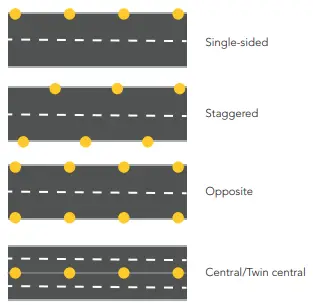
7. Height and spacing
The height and spacing are determined by various factors, among which the light distribution types and the placement of the street lights are the most important. The recommended height and spacing settings are listed in the following table. You can also calculate the height and spacing of your lamps with our calculator!
| Placement of street lights | Cutoff | Semi-cutoff | Non-cutoff | |||
| Height(h) | Spacing(d) | Height(h) | Spacing(d) | Height(h) | Spacing(d) | |
| Single-sided | h≥w | d≤3h | h≥1.2w | d≤3.5h | h≥1.4w | d≤4h |
| Staggered | h≥0.7w | d≤3h | h≥0.8w | d≤3.5h | h≥0.9w | d≤4h |
| Opposite | h≥0.5w | d≤3h | h≥0.6w | d≤3.5h | h≥0.7w | d≤4h |
h: the installation height of the street lights
w: the effective width of the roads (excluding greening and other non-roads)
d: the installation spacing of the street lights
8. Color temperature
Simply speaking, considering color temperature means choosing between yellow and white light. The representative type of street light that emits yellow light is the HPS street light. Yellow light can provide good fog penetration capabilities, but it is often used in indoor lighting because it makes people relaxed. White lights, however, keep people alert, which is necessary for drivers. What’s more, although the color temperature doesn’t actually affect CRI, it is likely for people to see more clearly under white light, as it has a color temperature like sunlight.
For those who prefer yellow street lights with a color temperature of around 3500 K, they can still use LED lights to replace HPS lights. The color temperature of LED lights is customizable, so clients can customize before letting the manufacturers produce the lights. But the mainstream LED street lights are white, with a color temperature between 4000-5000 K.
9. Heat dissipation
For LED lights, there are two ways of dissipating the heat. One is active cooling, including installing fans, water cooling, semiconductor refrigeration chips, etc. The other is passive cooling, which includes natural heat dissipation, heat pipe and fins, vapor chamber and fins, loop heat pipe technology, etc. Passive cooling is more suitable for street lights because it will not affect the stability of the outdoor street lighting system.
Conclusions
The key to street light design lies in light source choice and design, choosing the right poles, and how to correctly place them. All these considerations are based on street lighting standards and an analysis of the roads. If you want to know more about street lighting design or find top-notch LED light designers, you can talk with us now!
